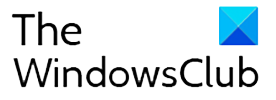Google Chrome 86 provides users with a new cache partitioning mechanism for additional privacy protections. Google has been experimenting with cache partitioning eve since it launched Chrome 77. Chrome 86 now broadly implements the cache partitioning feature.

Google Chrome to prevent cache attacks
The motive behind the cache partitioning is to prevent documents from one origin from knowing whether a resource for another origin was cached. This is achieved by splitting HTTP cache or shared cache, courtesy of the top frame origin.
Splitting the HTTP cache, which is one per profile, allows Chrome to prevent side-channel attacks. Well, side-channels attacks occur when one site detects resources in another site’s cache. In cache attacks, the privacy of Chrome users is at risk.
The following are the risks associated with cache attacks
Attackers can detect if the user has visited a specific website.
If the cached resource belongs to a particular site or group of sites, an adversary can track the user’s browsing activities by checking if the cache comprises that resource.
Cross-site search attack
Cache attacks can also lead to a cross-site search attack. In such attacks, an adversary can exploit the fact that certain popular sites load a specific image when a search result is empty. This way, an adversary can detect if an arbitrary string is in the user’s search results.
“Chrome hasn’t addressed this problem in the past due to concerns that the cache hit rate would be dramatically reduced, causing large increases in network usage and longer page loads. Recent experiments in canary and dev channels show that contrary to our earlier thinking, the losses would be acceptable,” Google explains in a technical document seen by TheWindowsClub.
By restricting the use of the cache, Google hopes to reduce resources from the cache. Early experimental results showed the cache hit rate drops by about 4 percent.
However, changes to first contentful paint aren’t statistically significant and the overall fraction of bytes loaded from the cache only drops from 39.1 percent to 37.8 percent.
Read: Google Chrome deploying QUIC and HTTP/3 protocols.






